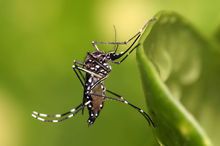The mosquito-borne virus that causes Eastern Equine Encephalitis is found all over the Americas, and infects horses throughout its range.

Mosquito-borne diseases affecting horses and humans
The mosquito-borne virus that causes Eastern Equine Encephalitis is found all over the Americas, and infects horses throughout its range, and now it is changing and affecting more humans.
© 2013 by Karim
Human infections are diagnosed every year in North America and are taken quite seriously since they carry a 50 percent chance of mortality, and can result in lifelong neurological damage. But 2010 marked a dramatic change in the way the virus behaved in Latin America.
In the summer of 2010, the eastern Panamanian province of Darien experienced a phenomenon that had never been seen before in Latin America: a human outbreak of eastern equine encephalitis.
According to professor Scott Weaver at the University of Texas Medical Branch in a paper appearing in the August issue of the New England Journal of Medicine: "Until the Darien outbreak, we had become convinced that the virus in South America was fundamentally different in its ability to infect people and cause serious disease,This epidemic broke that dogma's back very quickly."
UTMB researchers collaborated with Panamanian scientists to investigate the outbreak, testing samples from 174 patients and many horses. In the end, they confirmed 13 human cases of eastern equine encephalitis and one case of dual infection of both eastern and Venezuelan equine encephalitis.
"We saw only about a one in 10 case-fatality rate in Panama, which is low by U.S. standards," Weaver said. "Still, if this virus has changed and become more virulent for people, we need to know, number one, is it going to spread to other parts of Latin America or number two, are other Latin American strains likely to do the same thing?"
Weaver noted that earlier studies have shown that the eastern equine encephalitis virus is common in many Latin American locations where human exposure to virus-carrying mosquitoes is high. Since the virus is constantly mutating, it's possible that a strain like the one seen in 2010 in Panama could take hold in an ecosystem in nearby Colombia, Ecuador or the Peruvian Amazon.
"With a situation where a lot of people are being exposed to the virus, there would be the potential for a lot of new disease," Weaver said. "So it's important to understand what's happening in Panama both for the Panamanians and for people all over Latin America."
